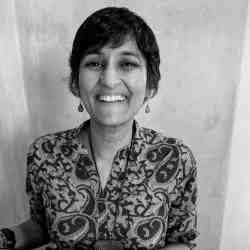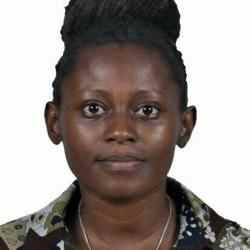Einführung
Dr. Frank Hoffmann pioneers a diagnostically superior, personal, low-cost breast examination method by training blind people as skilled diagnosticians. Frank’s approach integrates them into the primary health care infrastructure, while enhancing women’s health care experience and opening an entirely new professional path to a differently-abled constituency.
Die neue Idee
In Germany, preventive breast cancer diagnosis is either offered through mammography—which is expensive and therefore only routinely available for women over 50—or a superficial (i.e. limited to a few minutes by most German insurance options) manual breast examination available to all women, performed by doctors who do not employ a standardized technique (i.e. there is no mandatory in-depth training for physicians in Germany). As a result of the impersonal and often stressful experience, many women choose not to undergo preventative diagnosis. Consequently, Germany has the lowest participation rate for breast-cancer diagnosis Europe—an indicator of the broader challenge potentially facing many Western health systems where escalating costs create pressures on patient care. As prevention is critical in the fight against breast cancer, Frank recognized that the existing system required new resources and more cost efficient processes. He found this new resource among blind people, who possess a far better sense of touch and are widely neglected in the German labor market. (A mere 30 percent of Germany’s 1.2 million visually impaired people actually work for an income.) Frank developed the program, Discovering Hands®, which trains blind women to become Medical Tactile Examiners (MTEs). Their superior sensitive touch gives them a higher precision rate and enables them to detect breast cancer earlier than the average doctor. The first scientific study deducted within half a year has shown that in 450 cases, MTEs found more and smaller tumors than doctors. Moreover, the 30-minute breast examination, as compared to the usual 3-minute exam, gives women more time to ask questions and be reassured that they are healthy.
With this model, Frank is not only offering improved and more cost-effective early preventive breast cancer diagnosis, but is also creating a new profession, opening the medical field to the blind. Furthermore, Frank’s program helps seeing patients become aware of blind people’s unique capacities; turning blindness, often considered a disability, into an asset.
Das Problem
Breast cancer is the most frequent cause of death for women between 40 and 44 and is the most common type of cancer for women between 25 and 74. There are 58,000 new cases and 18,000 deaths every year in Germany alone. One out of ten women will suffer from breast cancer within their lifetime.
The mortality rate from breast cancer depends largely on early detection. Halving the time between the emergence of cancer and its detection typically doubles the survival rate. Despite this fact, the conditions for early diagnosis in Germany have deteriorated in past years. After legislative changes in 2005, high tech and cost intensive annual mammography is only reimbursed to women over 50, while women under 50 receive only a brief manual breast exam, typically lasting a few minutes. There is no standardized curriculum for doctors on how to perform an exam, nor is it part of an in-depth on-the-job training. What is more, insurance companies only cover costs for “normal” short breast examinations, thus leaving doctors and patients with uncertainty about the results.
The tension between preventative imperatives and cost is indicative for the broader challenge of health systems and demographic change. While breast cancer represents a particularly common and well-understood disease, many more medical conditions face a similar need for creative yet medically sound approaches, new resources, and more human-oriented solutions.
For Frank, blind people are the natural answer to the problem of effective breast cancer diagnosis. There are about 1.2 million people with less than 30 percent of normal vision in Germany. Of the 160,000 completely blind people, approximately 36,000 are in the employable age between 15 to 60 years, yet only 30 percent of them actually work, compared to 75 percent of the seeing population. Few professions are open to blind people, and they still face major discrimination when trying to enter the workforce. The health sector is a key field of productive work for them. For example, in physiotherapy many blind people combine the use of highly sensitized touch with verbal skills to provide superior health services.
Die Strategie
Frank designed a standardized system of orientation for breast examiners based on braille strips. This mapping system is an innovative solution on its own and has already been adopted by other gynecologists. It consists of five adhesive strips placed around a woman’s breast with both braille and color coordinates that allow any abnormality/lump to be pinpointed by two dimensional coordinates. This allows blind women to carry out breast examinations with complete autonomy. Trained as MTEs—a completely new profession that Frank created through his standardized training curriculum—they are also able to accomplish other daily tasks of a seeing medical assistant, including the maintenance of medical records.
Due to the personal nature of the procedure, Frank has only trained women. His method humanizes medicine by giving more attention to patients through individual contact and longer, more personal examinations. An MTE reports to the doctor as an assistant, not a replacement, and their examination feeds into the doctors ultimate diagnosis. When an abnormality is located, the doctor proceeds, most often with ultrasounds and mammography.
A study conducted by Essen University’s women’s clinic concluded that in 450 cases, MTEs found more and smaller tumors than doctors. The identification of smaller lumps allows earlier diagnosis and more effective treatment. Another advantage of employing MTEs is their ability to dedicate more time to patient examinations. Whereas a doctor is able to spend only a few minutes on each examination, MTEs can commit a half hour due to their lower labor costs. At 30 EUR (US$45) per breast exam (with a duration of 30 minutes) Frank’s model costs four times less than a mammography examination.
The training of MTEs takes place at the BFW occupational school in Düren, a center located in western Germany for individuals no longer able to continue their profession as a result of visual impairment or blindness. The testing phase of the project (2006 to 2008) is completed and Frank is spreading the Discovering Hands® method through a newly found non-profit organization to all other German occupational schools, which then will be licensed to instruct MTEs on the standardized training curricula. Until now, 10 blind women have qualified as MTEs and all have found permanent employment. Frank plans to graduate another ten MTEs at the end of 2010. The program has been acclaimed a success by both patients and practitioners in Germany. Health services in Europe including Ireland, France, Denmark, U.K., and Austria have shown interest in launcing an equivalent system in their countries.
The program is based on a process that can be paid through the existing cost covering system of insurance companies. Thus, it is profitable for every doctor able to return license fees to Discovering Hands®. In this way, it is one of the very few health innovations that is self-financing from the very beginning and thus, able to greatly expand. It also has enormous potential in countries without high tech medicine.
Die Person
Frank always looked for opportunities to improve existing systems that solve social and health problems. After working in a gynecological clinic, Frank, as a young gynecologist, took over a medical practice from his predecessor, who died unexpectedly, shortly after his arrival. After expanding his medical practice, the father of two children quickly recognized that single practices in suburban regions were no longer competitive nor sustainable organizational models. He used his entrepreneurial talent to convince other doctors to open a joint practice with him, becoming one of the first gynecological joint practices in a suburban region.
Eventually, Frank and seven other gynecologists merged their practices into what is today the biggest joint practice in the Duisburg region, the Praxis für Frauen. A leader in the field of gynecology, in 2001 Frank founded, Quality Circle of Gynecologists in Duisburg, a round table guaranteeing standardized quality control in the region of Duisburg, and led it until 2009. In 2009 Frank set up a service company to outsource the administrative and IT work of his joint medical practice. This for-profit venture is one of the first of its kind and a pioneering model of how medical practices could become more efficient and fit for future changes in the health care system. After the mammography law changed in 2005 Frank could no longer serve his patients with the quality of care he wanted. When he realized that his idea could offer employment for blind people, a group highly excluded from the labor market, he wanted to institutionalize his idea and make it known. Since 2004 Frank has developed Discovering Hands® mainly in his free time. In 2010 he founded a nonprofit organization to spread the Discovering Hands® method.




